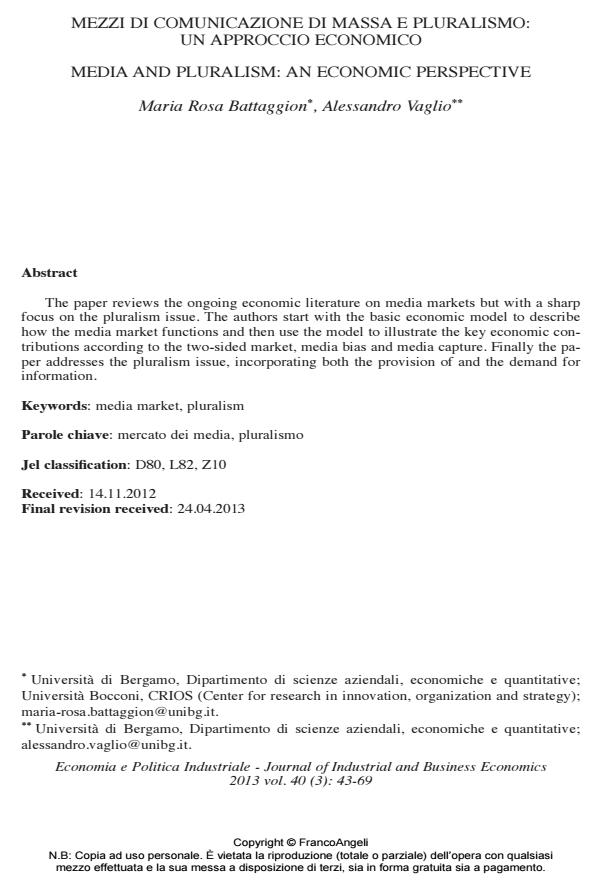Media and pluralism: an economic perspective
Journal title ECONOMIA E POLITICA INDUSTRIALE
Author/s
Publishing Year 2013 Issue 2013/3
Language Italian Pages 27 P. 43-69 File size 183 KB
DOI 10.3280/POLI2013-003002
DOI is like a bar code for intellectual property: to have more infomation
click here
Below, you can see the article first page
If you want to buy this article in PDF format, you can do it, following the instructions to buy download credits

FrancoAngeli is member of Publishers International Linking Association, Inc (PILA), a not-for-profit association which run the CrossRef service enabling links to and from online scholarly content.
The paper reviews the ongoing economic literature on media markets but with a sharp focus on the pluralism issue. The authors start with the basic economic model to describe how the media market functions and then use the model to illustrate the key economic contributions according to the two-sided market, media bias and media capture. Finally the paper addresses the pluralism issue, incorporating both the provision of and the demand for information.
Keywords: Media market, pluralism
Jel codes: D80, L82, Z10
, Mezzi di comunicazione di massa e pluralismo: un approccio economico in "ECONOMIA E POLITICA INDUSTRIALE " 3/2013, pp 43-69, DOI: 10.3280/POLI2013-003002